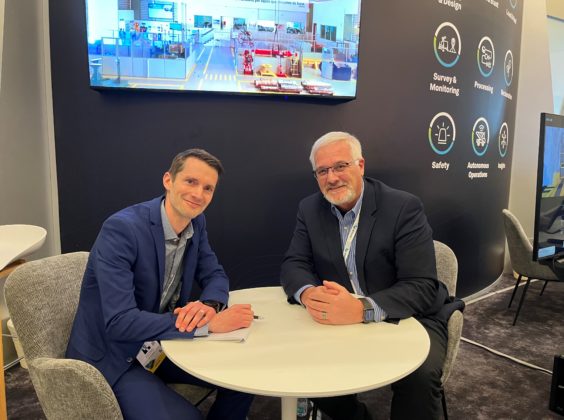A year on from the signing of an agreement to launch Middle East’s first “digital mine”, Hexagon’s Mining division and Ma’aden continue to make progress in integrating the former’s technology stack to enhance efficiency, productivity, quality and safety across the Mansourah Massarah mine, Hexagon’s Dave Goddard said on the sidelines of The Future Minerals Forum, in Riyadh, Saudi Arabia, this week.
Goddard, Executive Vice President, Mining, told IM that the collaboration with Ma’aden will showcase not only Hexagon’s technology offering, but also what can be achieved in a collaborative context around optimising operations, as opposed to simply adopting products.
“When I think about this agreement with Ma’aden, what stands out is the breadth of the portfolio we are discussing with them, as well as the willingness to adopt solutions beyond even what we can offer,” he said.
“This is by far the premiere ‘digital mine’ ecosystem in Saudi Arabia and can be seen as a top tier ‘digitalisation blueprint’ globally.
“It is not transactional at all; it is very much us sitting down at a table as partners and talking about the operational challenges at hand and how we can solve them.”
Mansourah Massarah, Ma’aden’s newest, largest and most technologically advanced gold mine, is in Al Khurmah governorates in Makkah Region. The mine consists of the Mansourah and Massarah resources, which are being developed as conventional open-pit mines. The 4 Mt/y plant employs carbon-in-leach and pressure oxidation processes and autoclave technologies for gold ore production. It reached a major milestone of producing first gold in September 2022.
While Ma’aden and Hexagon continue to work on incorporating elements such as Hexagon’s Operator Alertness System (fatigue monitoring) and others into the Mansourah Massarah operations, Goddard says it is continuing to focus on the wider opportunities within the Kingdom. This was made apparent this week at FMF 2025 where the company announced a significant investment of technology and training at a university in Saudi Arabia.
“We’re committed to ensuring that the miners of the future in the Kingdom are ‘digital natives’,” Goddard said of this investment. “This is very important to ensure that the number of new greenfield project opportunities that arise leverage new digital technologies from the very beginning.”

‘Immediate commercial synergies’
Goddard was coming off a busy few months of travel – a period which also included a visit to Aachen, Germany, to meet with the newly acquired indurad and xtonomy teams.
Goddard was very excited about this recent transaction, saying the radar-based solutions of indurad and the autonomy-focused offering from xtonomy would immediately benefit the wider Hexagon portfolio.
“The transaction gives us additional autonomy capabilities, immediate underground safety improvements and an opportunity to expand our mine-to-mill concept beyond the crusher,” he said.
On the automation front, Goddard outlined a potential autonomous drilling proposition combining Hard-Line’s drive-by-wire controls, the driver kit from xtonomy, the existing Mission Manager ecosystem and Phoenix Drill Control’s AI-backed drilling solution. “Already we could be in a position to offer a 30% improvement on the standard operator-led solution,” he said.
One would also expect xtonomy’s existing autonomous haulage system, already deployed in the UK and Austria in quarry haulage applications, to be leveraged in the future.
In terms of the mine-to-mill concept additions related to the transaction, Goddard added: “It allows us to provide ‘material flow intelligence’ throughout the mine. In the future, there could be a ‘digital twin’ type of reconciliation happening where a ‘prescription’ is made out to the front end of the mine based on the parameters being received at the back end.”
Goddard said the benefits of the acquisitions were coming through immediately.
“Even in the first month, there were three commercial synergies we were able to take advantage of,” he concluded.



